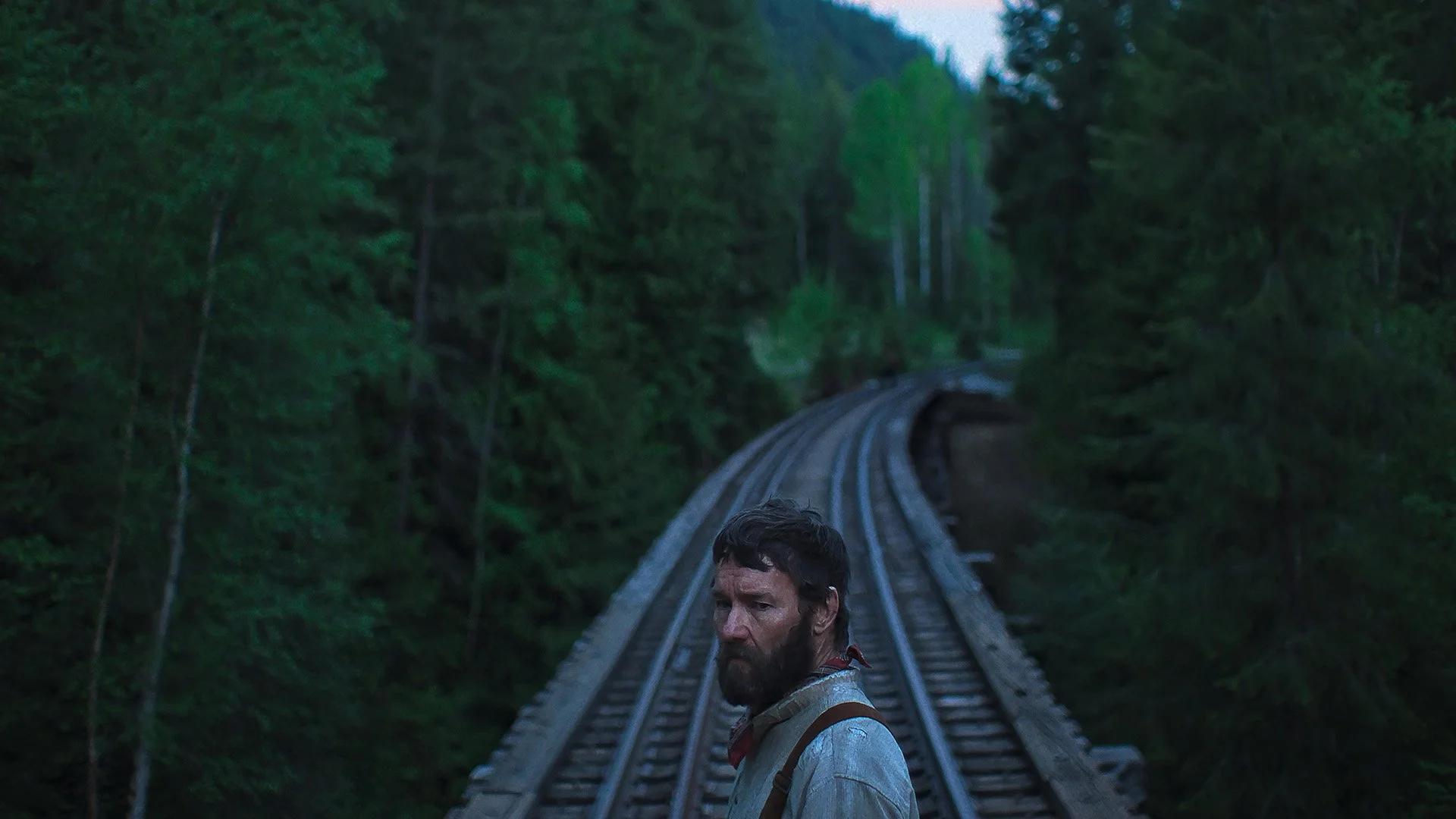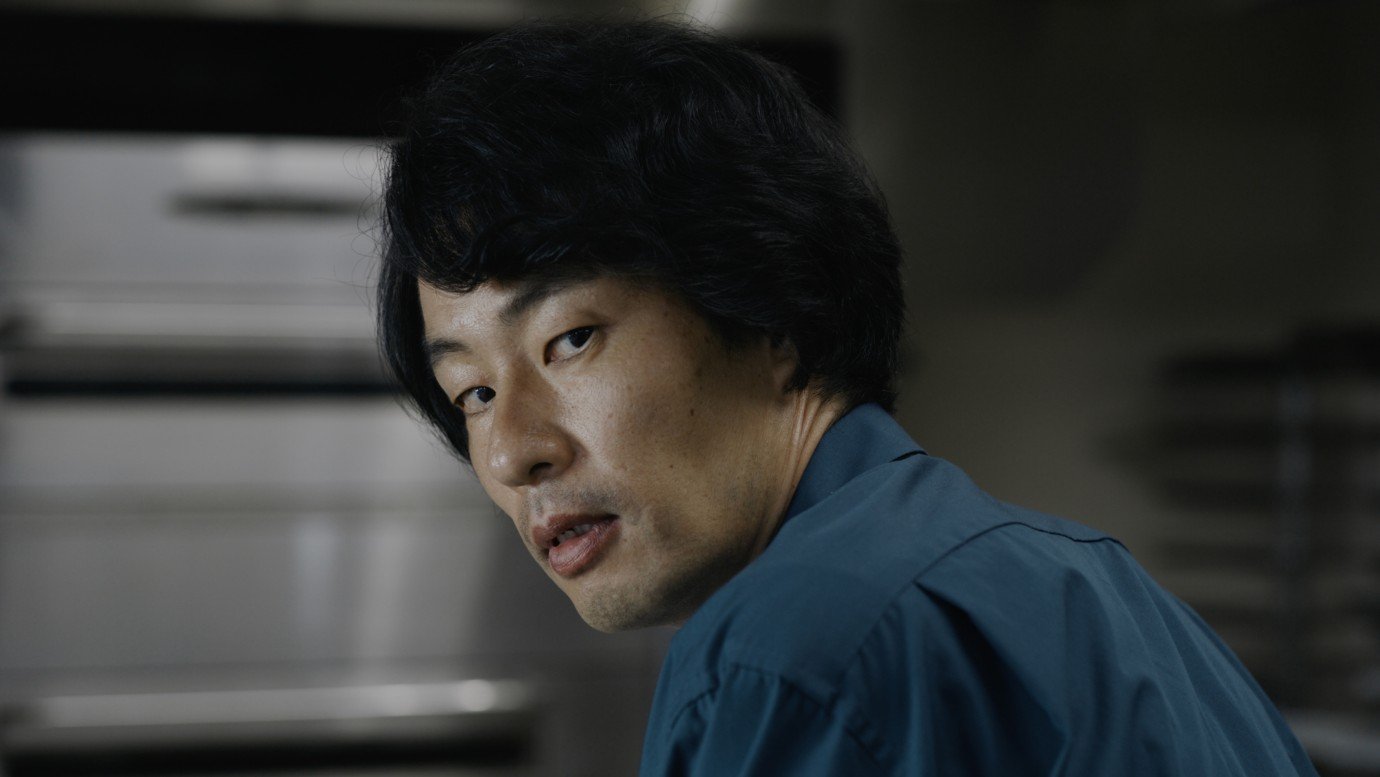Review: The Brutalist (2024)
Ambition counts for something and The Brutalist is ambitious. Envisioned as an American epic in the vein of Paul Thomas Anderson or Orson Welles, Brady Corbet’s film follows the life and career of a Jewish Hungarian architect, László Tóth (Adrien Brody), who arrives in America after surviving the Holocaust and makes his way in this new world working for a wealthy Pennsylvania industrialist, Harrison Lee Van Buren (Guy Pearce). It’s a film of big vision and bold choices, shot in 35mm VistaVision (and projected in 70mm) and running 215 minutes with an overture and an intermission. It’s a film that loudly asserts its status as important art, about the immigrant experience in mid-century America, about artistic struggle, about the Jewish diaspora, about ambition and regret and what constitutes a meaningful life. And fairly often it brings the goods.
The film begins with a bang as we emerge from the bowels of a steamer ship at Ellis Island. The camera tracks through the dark corridors, following a haggard László confusedly pass through this cramped and nightmarish space to pass into the open air and spy his first sight of America: the inverted Statue of Liberty as László looks over his head and back at the world that has dawned. The place and the inversion are key: this is a story about the land of freedom, but also about how the American Dream can be perverted, the trap lurking beneath the surface. Daniel Blumberg’s tremendous score, with its blasts of horns and lilting strings, imbue the moment with a sense of triumph. The Brutalist starts with such promise, and for the moment, we’re swept up in its vision.
To the film’s credit, it holds our attention for a long time, the ample running time not simply padding things out, but seeming to be a necessary element of witnessing László’s life in such detail. We are rapt as we watch László struggle to find work, clash with his cousin (Alessandro Nivola), who seems ashamed of his Jewish background and hides it, perhaps at the behest of his Gentile wife (Emma Laird). Eventually, László meets Van Buren and the narrative clarifies. Van Buren wants to build a community centre on a hillside in rural Pennsylvania as a monument to his late mother. László will design it in his Brutalist style (a post-war architectural style that emphasizes minimalism and structure over decoration). And so the film becomes about the clash between László and Van Buren, between the immigrant artist and the American businessman, between art and commerce.
For the first part, ostentatiously titled “The Enigma of Arrival,” we’re focused on the task of constructing this mighty building. The procedural and the personal align, László’s own story enthralled to the vision of his artistry, and it’s fascinating to witness each and every step, like watching the construction of the bell during the final third of Andrei Tarkovsky’s Andrei Rublev. The cinematography by Lol Crawley does a nice job of hiding the film’s budgetary limitations—it’s impressive the film cost under $10 million. There are massive vistas of the work site, artistic flourishes such as framing László against a twilit sky with sparks blazing in the foreground, or simple touches such as holding on wide shots to allow us to appreciate the architecture of the spaces we enter.
Brody is exceptional as László, embodying the tortured artist with a combination of tenacity, pride, and desperation. Brody has always carried himself on screen with a weariness, emphasized by his sad eyes and hawkish face, which suits him as László, a man who seems willing to torment himself in order to fulfill his ambitions. He’s indomitable, but hardly invincible, so we see how life takes its toll on his mind and body.
As Part 1 builds to the intermission with a savvy crosscutting of archival footage with László’s own construction of the project, I was ready to accept we might have another major American filmmaker on our hands. But then Part 2 comes and the film’s grand vision becomes so much smaller. It doesn’t undo what worked in the first half, but it does clarify that Corbet is not as visionary as advertised.
The second half, titled “The Hard Core of Beauty,” sees the arrival of László’s disabled wife, Erzsébet (Felicity Jones), as well as his mute niece Zsófia (Raffey Cassidy), who had languished in Europe while László struggled to arrange their immigration. It also traces László’s confrontations with Van Buren, personally and professionally. The film’s focus is still squarely on the artistic struggle, but quietly, the personal drama starts to dispel the film’s hypnotic spell. We start to pay too much attention to the tired domestic arguments between the characters, or notice that some of the developments of the character arcs seem tortured and obvious.
When the film was monomaniacally focused on the creation of art, and used that as the lens to examine all its other themes, it was easy to overlook a wonky line reading or a scene construction without any visual momentum. But eventually, these conventional storytelling elements overwhelm the more ambitious focuses of the film, until we reach a moment so violently literal, so thematically obvious, so narratively distracting, that the magic is truly dispelled. From there on out, we want to see what becomes of László and his life’s work, but with none of the gusto that animated us to that point.
Some folks have suggested that Part 1 of The Brutalist is a masterpiece and Part 2 an ambitious failure, and thus, taken on the whole, the film still has much more vigorous filmmaking than most movies can conjure in our current moment. I understand the thinking, but Part 1 and Part 2 are not two separate movies, simply two halves of a single film that is fascinating, but cannot stick the landing.
That’s not to say it’s a bad movie or a failure overall. I understand the adoration. I am compelled by its vision. But I’m not convinced that it is monumental, despite how much the word is used in reviews of or publicity for the film. Is it fair to say that Corbet is a good director, but a shaky writer? It’s a pat remark, but sums up my assessment. I’m glad The Brutalist exists and watching it in 70mm on a winter afternoon was a memorable theatrical experience, but the idea that it represents something on the scale of a Welles or Anderson film is mistaking ambition for achievement, promise for performance.
6 out of 10
The Brutalist (2024, Hungary/UK/USA)
Directed by Brady Corbet; written by Brady Corbet and Mona Fastvold; starring Adrien Brody, Felicity Jones, Guy Pearce, Joe Alwyn, Raffey Cassidy, Stacy Martin, Emma Laird, Isaac de Bankolé, Alessandro Nivola.



Darren Aronofsky ultimately cannot manage the tone of this black comedy crime film.